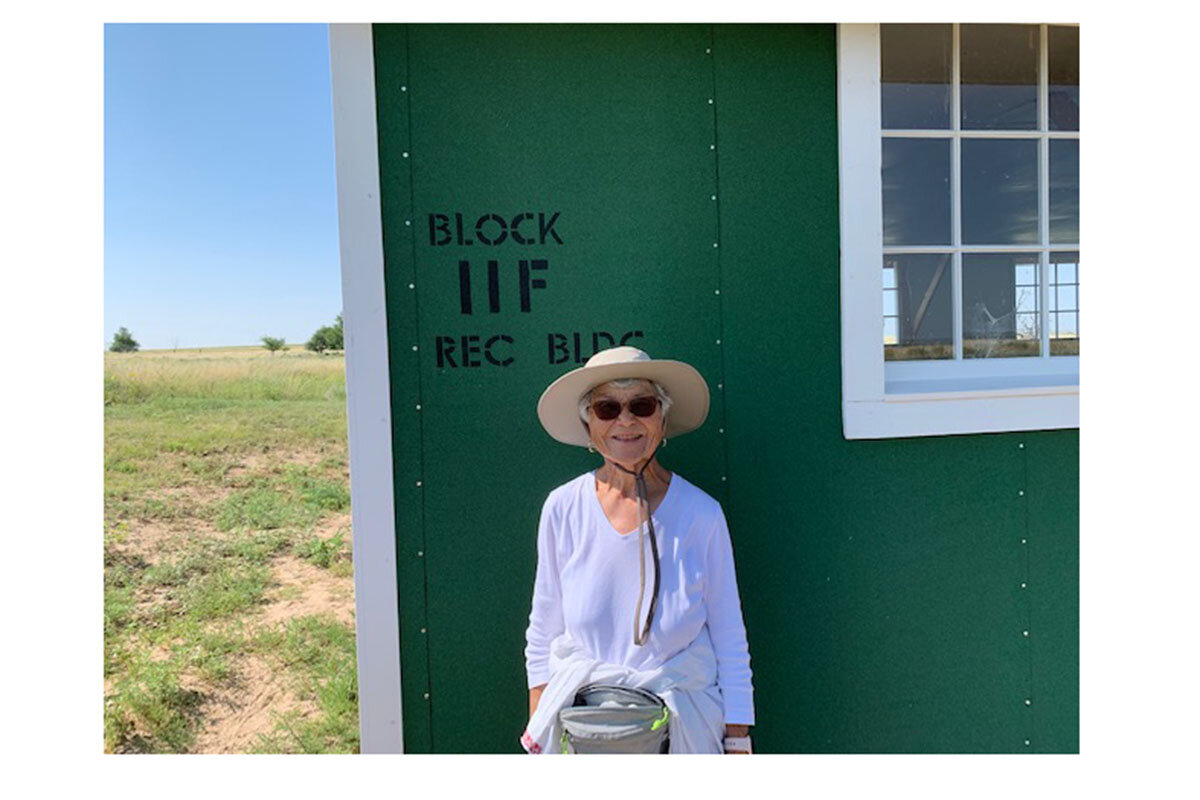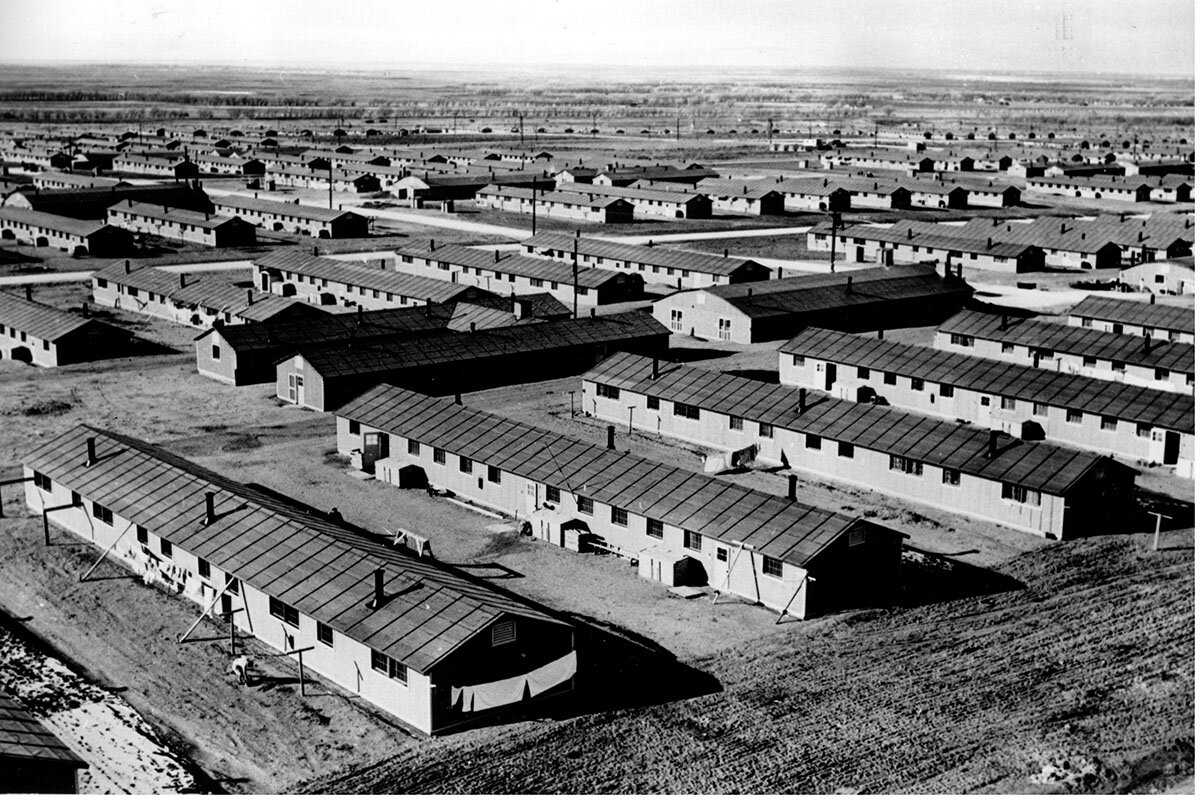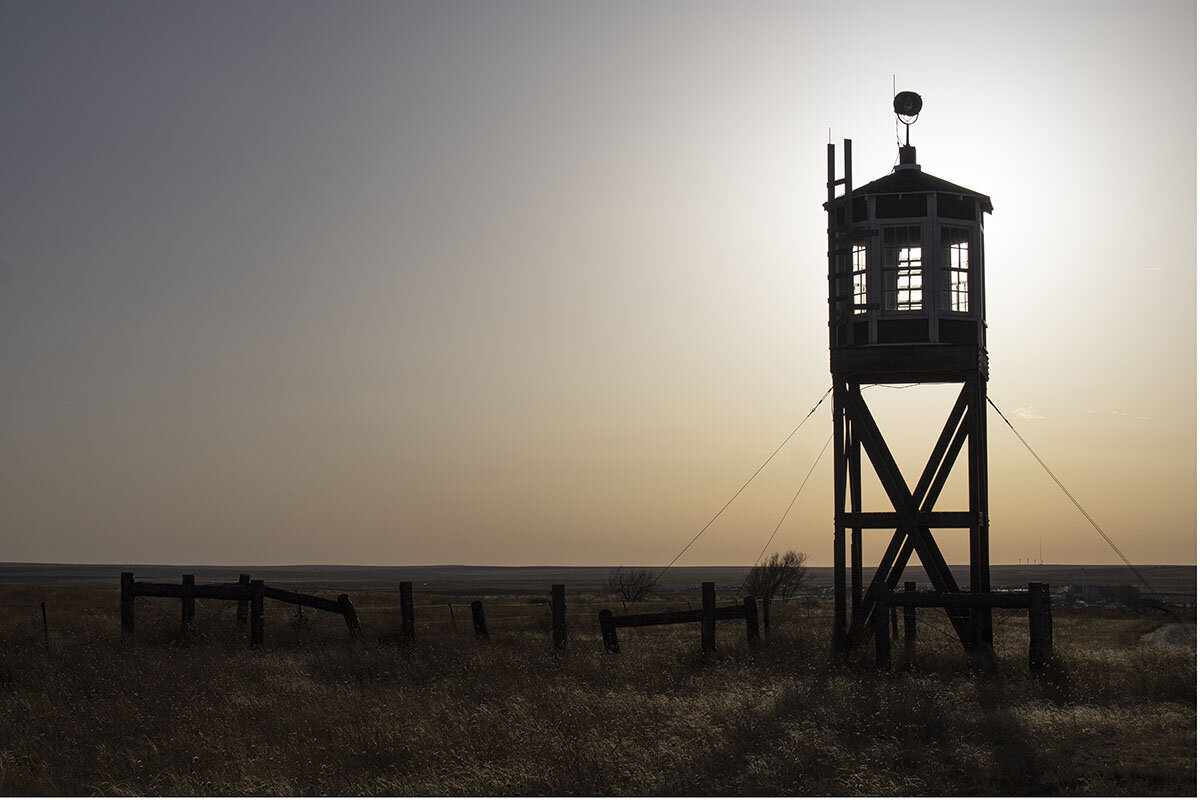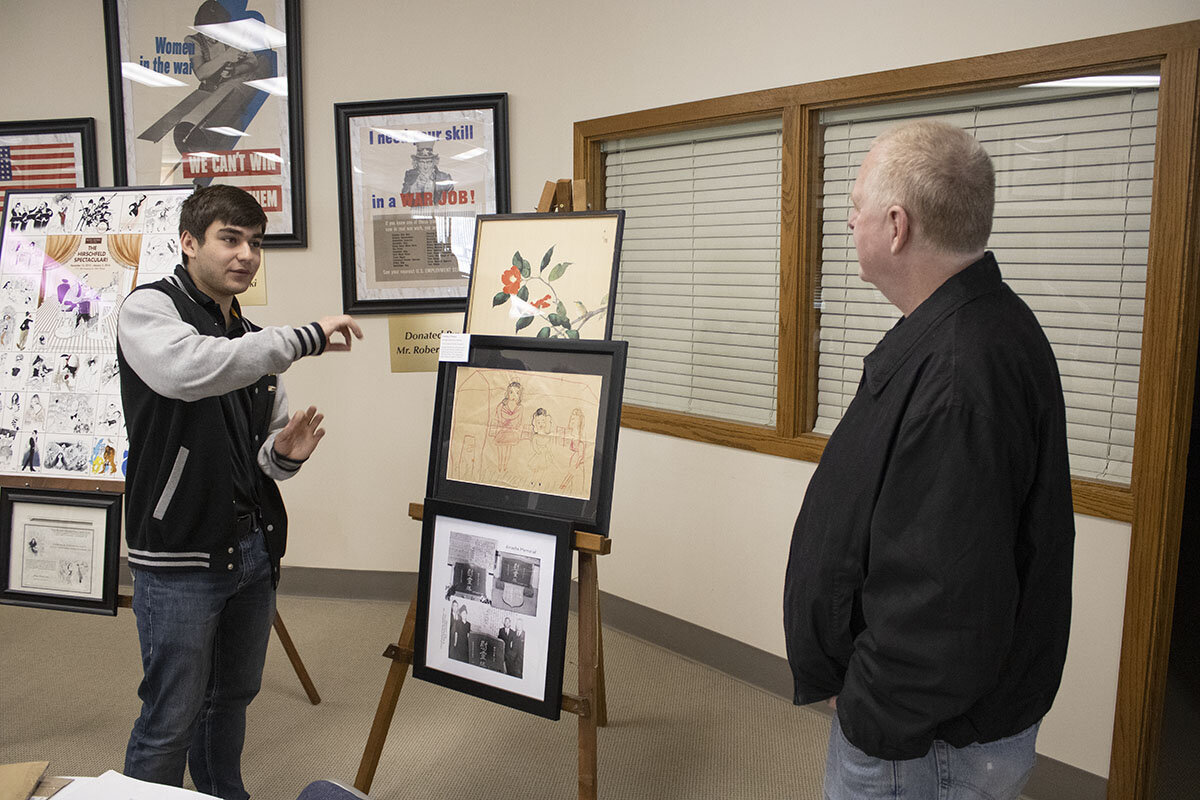Preserved by students, WWII internment camp becomes national park
Loading...
| Granada, Colo.
The wind sings a wordless song across the Colorado plains, making acres sway. Out of the brush rise concrete remains of a camp that imprisoned over 10,000 people.
Carlene Tanigoshi Tinker, a toddler during World War II, lived at this Japanese American internment camp, called Amache. She sat atop her father’s shoulders with a scarf around her face – a shield against wind-whipped sand – as they lined up outside for food. Her parents were United States citizens.
After their release, stigma followed her to Denver, she says, where kids would pelt her with rocks after school. For the rest of her childhood, Amache was “a topic that we never discussed,” remembers Ms. Tinker, a retired biology teacher living in California. “I think it was a painful experience.”
Why We Wrote This
Who’s responsible for preserving regrettable parts of United States history? For years, Colorado students have answered the call.
Last month, President Joe Biden designated Amache as a national park, but for some it was, in essence, already serving as one. For years, camp survivors and descendants have visited the site that once confined their families, welcomed by a local educator in the nearby town of Granada.
Over almost 30 years, John Hopper, dean of students at Granada School District RE-1, and hundreds of his pupils have helped preserve the rural site and run a museum in Granada. Their sense of civic responsibility has built bonds across cultures and generations, transcending a dark chapter of American history.
“It’s taught me a lot about empathy,” says Bailey Hernandez, a junior. “You start to think, well, how would I have reacted if my family was forced into one of these camps?”
One of his predecessors toured Ms. Tinker around Amache in 2004, her first trip back. She remembers feeling uplifted.
“These kids are really, really amazing to be so dedicated,” says Ms. Tinker. “They know how important it is and they want to preserve this story.”
Civilian suspects
Two months after the December 1941 Japanese attack on Pearl Harbor, Franklin Roosevelt signed Executive Order 9066. That led to the forced removal of more than 100,000 people of Japanese ancestry from their homes into internment camps. Amache, one of 10 such sites, was originally called the Granada Relocation Center and ran between 1942 and 1945.
On the rattlesnake-ridden plains of southeast Colorado, Amache mostly held American citizens – who were seen as potential enemies and subjected to loyalty questionnaires. In spite of these conditions, internees beautified their arid captivity by planting trees and gardens, even creating a pond.
The U.S. government under Ronald Reagan formally apologized in 1988; reparations checks followed. And now with last month’s signing of the Amache National Historic Site Act, oversight of the property will transition to the National Park Service.
That’s welcome news to Mr. Hopper, for whom all things Amache are a daily responsibility.
For the students
Despite being recognized for his work – including praise from the consul general of Japan in Denver – Mr. Hopper says he prefers to “be on the sidelines” and center his students.
“It is a heavy, heavy topic, especially when you talk about civil liberties,” he says. “But that’s part of my job I enjoy talking about – needs to be talked about.”
Mr. Hopper, who does not have Japanese ancestry, first visited Amache as a new Granada high school social studies teacher in 1990.
“It just looked like a sagebrush cactus hill with cattle on it,” he recalls.
In 1993, some “really bright and willing students” wanted to pursue an Amache project and began interviewing a survivor whom Mr. Hopper’s family knew. That year the teacher established the nonprofit Amache Preservation Society (APS). What began as extracurricular activities eventually formalized into a class. Collaboration with survivors, descendants, and the town, and partnership with groups like the Amache Club and Amache Historical Society, have been key to building trust.
Over the years, students have divided their time between physical preservation of the site – mowing or renovating a cemetery or other landmarks – and interpretive efforts. APS students present to other schools and groups, and help keep up the Amache Museum, where they double as docents.
“I can’t think of any group that does more for Amache,” says Calvin Taro Hada, an Amache descendant and president of the Nikkeijin Kai of Colorado, a Japanese American organization.
Amache, whose land is owned by the town, became a national historic landmark in 2006. Two years later, APS students began working on-site with the University of Denver, which leads archaeology projects through summer field schools there and teaches high schoolers conservation skills like object handling.
“The first time I ever saw John’s kids give a presentation, ... I thought, OK, this is what this is all about,” says Bonnie Clark, an anthropology professor at the University of Denver and leader of the DU Amache Project. “They are super engaged,” she adds.
When Mr. Hopper retires, he plans to pass the mantle of APS leadership to social studies teacher Tanner Grasmick, who joined APS as a high schooler.
The teacher credits his experience as one of Mr. Hopper’s students as the reason he became an educator himself.
“You hear what they had to go through, the adversities that they had to face, and for them to come back and just be so grateful [for the preservation efforts], ... it’s amazing,” says Mr. Grasmick.
The teacher from a farming family says he still corresponds with his Japanese host mother, years after a trip abroad where he and peers gave presentations. Before the pandemic, APS members would travel to Japan every other year and often stay with host families.
No longer the enemy
On a March morning in Granada, Bailey wears a gray-black varsity jacket for some high school sports team – or so it seems. A closer look reveals a stitched image of an internment camp barrack. It’s part of his APS tour guide outfit at the Amache Museum.
He passes through exhibits of the staged interior of a barrack, a carved gourd decorated with seeds, a military uniform.
“Out of all the camps, we actually have the highest volunteer rate” for internees joining the U.S. military, says Bailey.
His eyes widen as he speaks, as if each retelling of facts fascinates him afresh. By the tour’s end, Bailey has impressed guest Gene Bonventre.
“He seemed to really know his stuff and be enthusiastic about it, too,” says Dr. Bonventre, retired from the Air Force. “That made the museum visit a lot more special.”
The visitor says he’s headed to Amache next, about a mile and a half away. Ms. Tinker plans to return there soon to participate in the DU Amache Project field school – her seventh summer.
How might her parents react to her digging in the dirt, alongside students, excavating memories that many families spent years trying to repress?
“We are no longer seen as the enemy,” she says. “They would see that as gratifying.”










